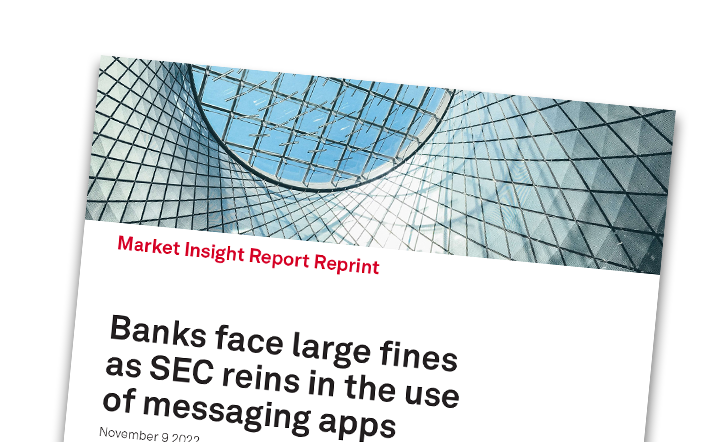Compliance for Mobile Chat Communications
Mobile apps like WhatsApp and Telegram are now business-critical in key markets. Reduce regulatory and legal risks with consistent policy application and governance for communications.
We're Here to Help
Protect your organizations from regulatory risks in your enterprise collaboration, chat, conferencing, social media, mobile chat, and email applications. Get in touch with our solutions architects!

Talk to a Compliance Expert
in SEC fines levied for record-keeping violations for personal mobile messaging
Source: SEC
of companies now view compliance as a barrier to entering new markets
Source: Compliance in the Era of Digital Transformation
of organizations see risk management as reactive and costly vs proactive
Source: Disruption is the New Norm: Risk Management Survey Report

Compliance and Governance for Mobile Chat Channels
Reduce Oversight Costs
Automated policy supervision powered by cloud-based machine learning can reduce oversight costs by up to 80%.
Ensure 100% Coverage
Reduce risk by orders of magnitude by scaling supervision to evolve beyond sampling.
Gain Visibility
Capture all content in native format to an immutable archive, with full audit trails and enhanced search.
Come see us on a bigger screen
Email Product Tour
See How Customers Protect Human Communication
When a leading financial services firm bridging institutional investing to cryptocurrency markets wanted to enable Telegram for business, it turned to SafeGuard Cyber.
"WhatsApp is critical to high quality HCP engagement in our overseas markets. SafeGuard Cyber's compliance solution enables field force agility, product delivery, and has helped accelerate our digital transformation."
Related Content
Safeguard Modern Communications
Ready to take the next step?
Expert Insights on the Cloud Workplace
Stay up-to-date on regulatory compliance risks that occur in collaboration, mobile chat, conferencing, social media, and email. Learn from experts about how SafeGuard Cyber addresses important enterprise initiatives like zero trust, remote work, digital transformation, and regulatory compliance.








